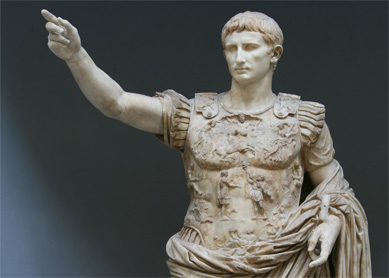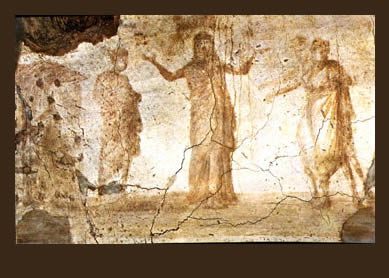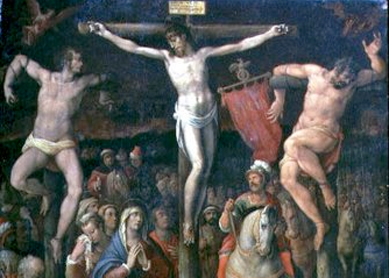In the famous image of Augustus of Prima Porta, the likeness of the emperor tells a mythological story about the new creation of the Pax Romana and his place as its architect and guarantor. Even if this statue’s provenance was local to his wife Livia’s garden, the ideas it communicated were reproduced across Roman territory, in multiple contexts, for a wide variety of viewers. Augustus, and the Roman Empire more broadly, is an important part of the world that shaped the New Testament and early Christianity. To this end it is important to consider that world’s complex visual rhetoric, for as with literature, iconography (“picture-writing”) conveys ideas to audiences.
How is ancient iconography related to the texts of the New Testament?
As important as an image of Augustus might be for engaging and understanding the historical, cultural, and mythological context in which the writings of the New Testament canon were produced, modern scholars differ on how images like this one might be connected with biblical texts or their meanings. In New Testament interpretation, the assumption that pictures and words are unrelated persists. One reason that positing a mutual interrelationship between words and images is complicated is that, historically, scholars have tended to privilege literary over visual representations. Because New Testament texts are collections of words, historical reconstructions of the ancient world in which these documents were produced have tended to focus on early Christian cultures as fixated on reading and hearing words as a primary mode of communication. That is, scholars have tended to assume that the existence of these texts and their codification as scriptures naturally means that there was a capable and eager reading audience for those scriptures. This is the case despite studies that attempt to chart ancient literacy as a somewhat rare and complex phenomenon.
How is ancient iconography useful in New Testament interpretation?
Thinking about visual representations as conveyers of ideas can help readers identify what is plausible for the study of the New Testament when images and texts are placed in conversation with one another. Such a realignment of sources could enhance our reading of biblical literature and challenge the conceptual framework in which the process of reading takes place. For example, interpreters might ask what it could mean to position the New Testament and images like the Prima Porta Augustus as rhetorically interconnected sites from which to think about power relationships and constructions of knowledge. Similarly, interpreters might also ask what kinds of symbols were appropriated and utilized by early Christians.
Raising these issues could open space for broadening our view of what sources count in New Testament studies, which may help us ask creative questions of the texts and—most importantly—ourselves. In this way, studying the New Testament might productively be engaged as an orientation toward investigating what it has meant, and can mean, to be human in this world, using scriptures and their environments as important sites for doing so. This is not because such texts and worlds are more authoritative than other artifacts, but because scriptures and traditions serve as signifiers betraying various human discursive and performative responses to, and negotiations of, the world around us.
Bibliography
- Lopez, Davina C. Apostle to the Conquered: Reimagining Paul’s Mission. Minneapolis: Fortress, 2008.
- Nasrallah, Laura. Christian Responses to Roman Art and Architecture: The Second-Century Church amid the Spaces of Empire. New York: Cambridge University Press, 2010.
- Zanker, Paul. The Power of Images in the Age of Augustus. Translated by Alan Shapiro. Ann Arbor: University of Michigan Press, 1990.





